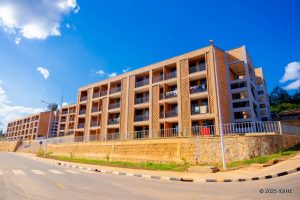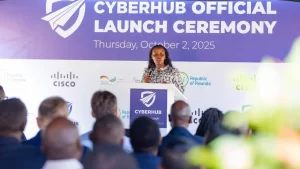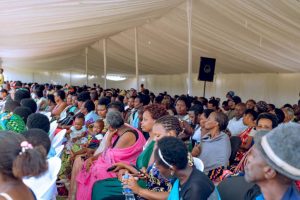War stole their youth: Inside the ongoing recruitment of child soldiers in Eastern Congo
5 min read
By Peace Hillary
It was night in Lubero, a rural territory in North Kivu, when armed men burst into a deserted school where Alain, 13, had taken shelter with his sister. They screamed, beat the children, and separated them. Alain was shoved into a truck, terrified and confused. That night, war shattered his innocence.
Jean was even younger. “I was 12 when the soldiers came to my village,” he recalls, now 17, his voice steady but eyes distant. “They told me I had no choice. They beat me, gave me a gun, and said if I didn’t kill, I would be killed.”

These are not isolated stories. They are fragments of a grim reality in Eastern Democratic Republic of Congo (DRC), where militias continue to abduct, brutalize, and transform children into weapons of war. The practice is not waning. It is expanding, in the shadows of global indifference.
According to the United Nations, 1,861 cases of child soldier recruitment were verified in 2023, up 20% from 2022. But humanitarian workers warn the true number is far higher. Local NGOs estimate that 30,000 to 40,000 children remain associated with armed groups in the DRC, making it one of the world’s worst child soldier crises.

UNICEF reports that between 2004 and 2022, over 56,000 children were released and reintegrated, but relapse rates remain high due to poverty and insecurity. In contrast, Sierra Leone’s post-war reintegration programs achieved more lasting results, highlighting the gap in Congo’s efforts.
The perpetrators are numerous, from local Mai-Mai factions and the FDLR to the newer Wazalendo coalition, a patchwork of militias that emerged in late 2022 to fight the M23 rebellion but quickly expanded into a movement accused of mass abuses, including child recruitment.
“The method is ruthless,” says a journalist in Goma. “Children are harvested from the streets, camps, and abandoned villages. They are forced into roles as fighters, porters, cooks, or sex slaves.”
According to some analysts, the crisis is worsened by the collapse of education. In February 2025 alone, more than 2,500 schools and learning spaces were closed or destroyed in the Kivus. Stripped of classrooms and protection, children become easy prey.
Katsongo William, a social analyst in Goma says: “Recruitment is fueled by deep structural vulnerabilities including poverty, displacement, and family separations. For many boys, the gun is the only livelihood. For many girls, abduction means forced marriage or exploitation”.
FARDC’s shadow
The tragedy is deepened by the blurred role of Congo’s own army. Officially, the FARDC was delisted in 2017 from the UN’s shame list of child recruitment violators. But evidence points to a darker reality.
A UN submission in 2025 revealed that FARDC has provided uniforms, financing, and coordination to the Wazalendo coalition. Witnesses report teenagers manning checkpoints in FARDC attire, rifles slung over their thin shoulders, radios crackling as they enforce rebel orders.

“The state’s complicity undermines everything,” says Simba Kizi, a legal analyst in Goma. “How do you prosecute warlords for child recruitment when elements of the army are accused of enabling it?”
Critics argue that reforms in the FARDC remain cosmetic. Military courts are underfunded, and officers accused of collaborating with militias are rarely suspended. Experts call for an independent monitoring mechanism and closer cooperation with the International Criminal Court to bring both warlords and complicit officers to justice.
Broken families, silenced children
The human cost is measured in voices broken and futures lost. Claudine searched for her son Emmanuel for months after he was abducted at age 10. “I walked from village to village. I cried until my voice broke. One commander laughed and said, ‘Your son is ours now.’”
Emmanuel was later freed during a joint MONUSCO-FARDC operation in 2023. Severely malnourished and traumatized, he was placed in a Catholic mission in Butembo, where he now lives with other rescued children. He receives care and schooling, though he remains too traumatized to speak about what he endured.
A 16-year-old survivor from Lubero, a rural territory in North Kivu province bordering Uganda which has long been a hotspot for militia activity, making children particularly vulnerable, recalls: “We begged them to let us return home. Instead, they whipped us and kept us hidden in the bush. Guards surrounded us with orders to shoot anyone who tried to run. Every night, I thought of my mother and my brothers, but escaping was impossible.”

Former child soldier David, today working with a reintegration NGO in Goma, describes the indoctrination: “They taught us to kill before we even knew how to write. We lost everything, including our homes, our names, and our souls.”
Alain, another boy, once a playful boy, now stands frozen, as if war turned him to stone. “He no longer speaks, he no longer plays,” a humanitarian worker notes. “The silence is his only defense.”
Why programs fail
Since the early 2000s, billions of dollars have been poured into Disarmament, Demobilization, and Reintegration (DDR) programs. Yet the cycle persists.
“These children return with deep psychological scars,” says a trauma counselor in Goma. “There are too few services. Without sustained support, many drift back to the bush just to survive.”
UNICEF’s 2023 assessment echoed her concern: “Stigma, poverty, and trauma drive children back into armed groups. Reintegration remains fragile.”
By contrast, Uganda and Sierra Leone demonstrated that long-term psychosocial support, vocational training, and community healing programs can help survivors build new lives. Congo’s short-term, donor-driven approach often sets children up for relapse.
Hope in the shadows
Amid the despair, small but fragile pockets of optimism are emerging. At Maison de l’Espoir Center in South Kivu, the fragility of hope is embodied in young survivors like Jean, who once carried a gun and now holds a pencil. “I wanted to be a teacher, not a killer,” he says softly.
A local priest explains: “We don’t just feed them. We help them rediscover their humanity. That takes time and love.” The priest underlines that these efforts are underfunded, overstretched, and often forgotten when donor priorities shift elsewhere.
Grassroots initiatives, from Catholic missions in Butembo to women’s associations in Beni, are teaching survivors carpentry, tailoring, and farming. Though underfunded and overstretched, these projects prove that recovery is possible when communities take the lead.
Recent diplomatic efforts also bring hope. On July 19, 2025, the DR Congo government and the M23 signed a Declaration of Principles in Doha, signaling commitment to dialogue. Though fragile, such peace talks offer a chance to protect Congo’s most vulnerable: children whose youth continues to be stolen.
The price of silence
Yet the world seems numb to Congo’s wars. Budgets are cut, headlines move on, and the international gaze shifts elsewhere.
“Children are not soldiers. They are victims,” Virginia Gamba, the UN Special Representative for Children and Armed Conflict, told the Security Council in 2023. “The normalization of child recruitment in Eastern Congo is a collective failure.”
Claudine, Emmanuel’s mother, puts it simply: “If the world cared, they would come and see these children. They would know this is not a number. It is our sons and daughters, dying slowly.”
A social worker in Goma adds: “Until the silence is broken, this war will keep robbing Congo of its youth, and with them, its future.”



